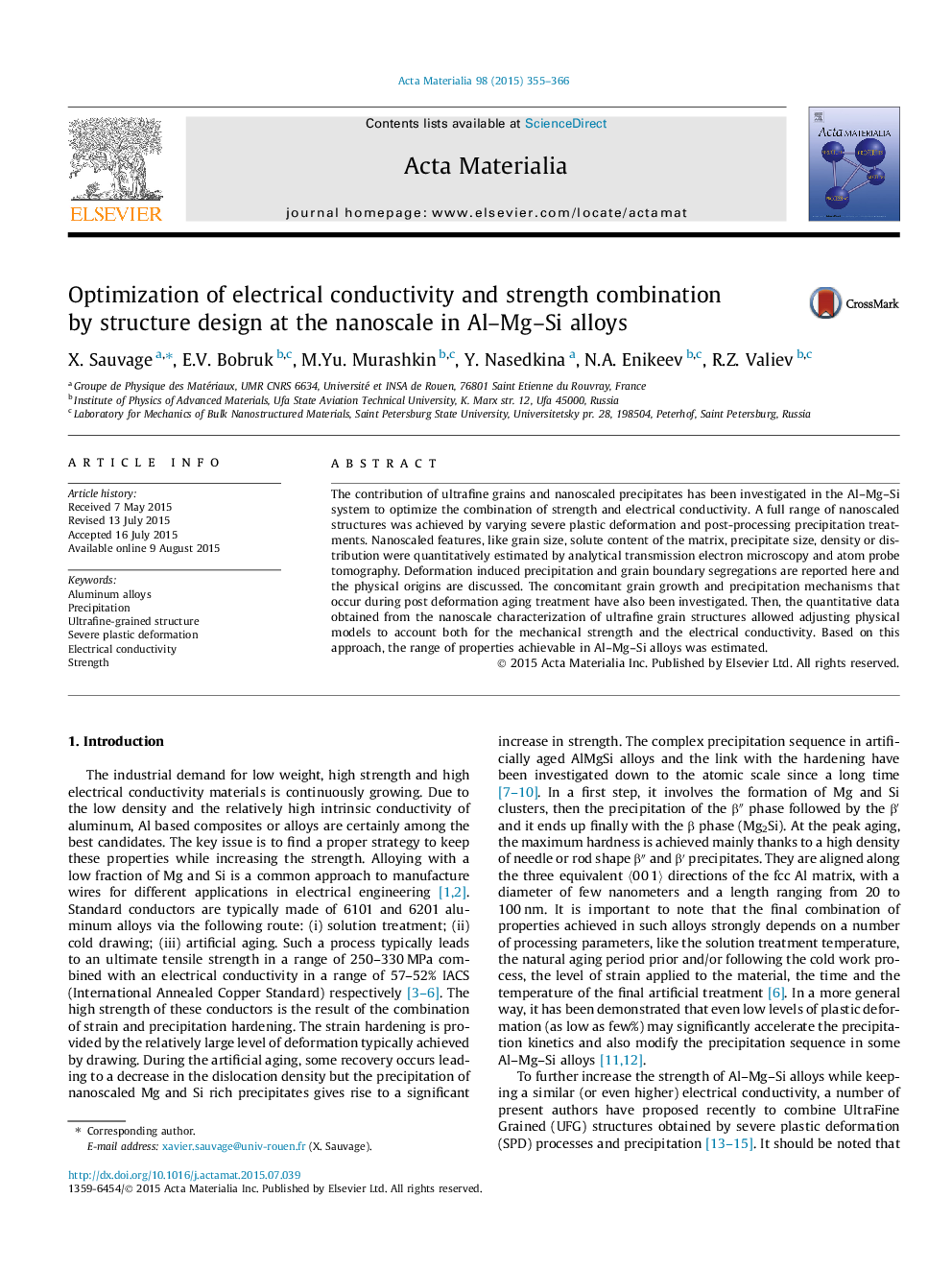| Article ID | Journal | Published Year | Pages | File Type |
|---|---|---|---|---|
| 1445285 | Acta Materialia | 2015 | 12 Pages |
The contribution of ultrafine grains and nanoscaled precipitates has been investigated in the Al–Mg–Si system to optimize the combination of strength and electrical conductivity. A full range of nanoscaled structures was achieved by varying severe plastic deformation and post-processing precipitation treatments. Nanoscaled features, like grain size, solute content of the matrix, precipitate size, density or distribution were quantitatively estimated by analytical transmission electron microscopy and atom probe tomography. Deformation induced precipitation and grain boundary segregations are reported here and the physical origins are discussed. The concomitant grain growth and precipitation mechanisms that occur during post deformation aging treatment have also been investigated. Then, the quantitative data obtained from the nanoscale characterization of ultrafine grain structures allowed adjusting physical models to account both for the mechanical strength and the electrical conductivity. Based on this approach, the range of properties achievable in Al–Mg–Si alloys was estimated.
Graphical abstractFigure optionsDownload full-size imageDownload high-quality image (90 K)Download as PowerPoint slide
